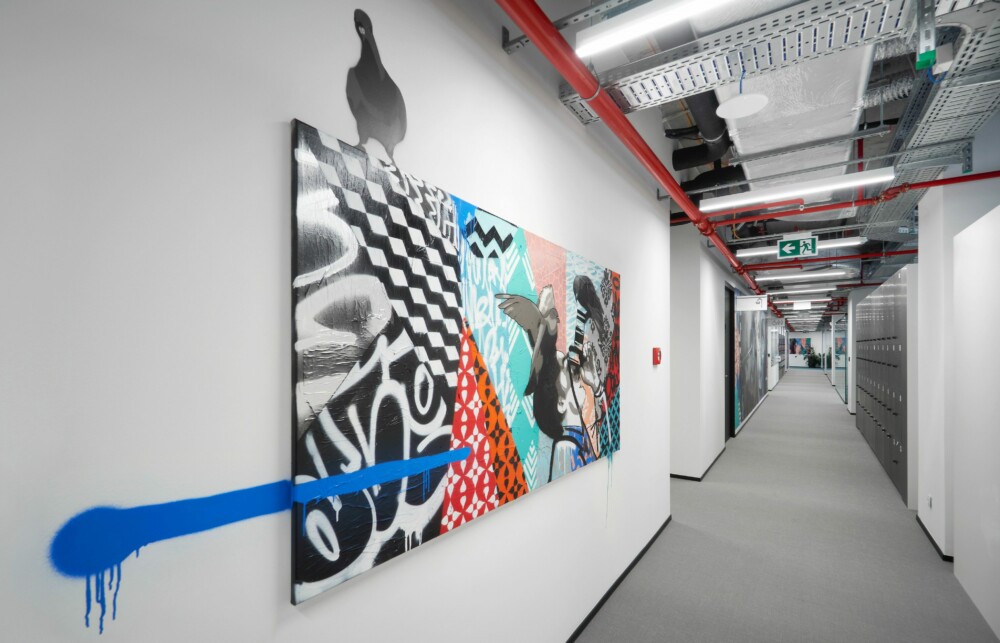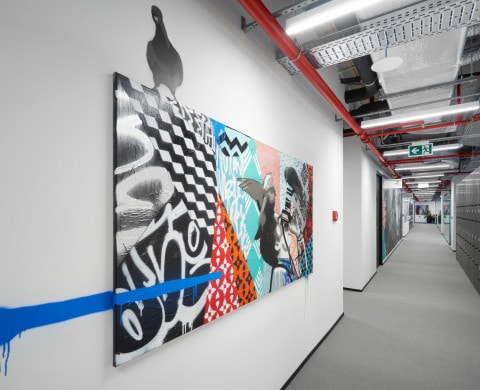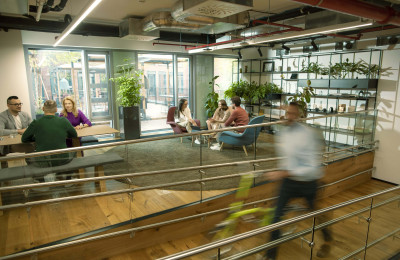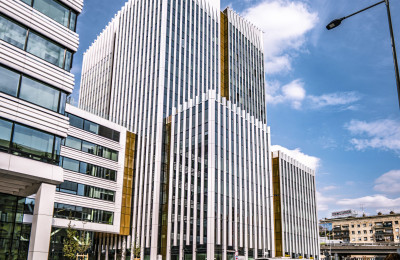The four pillars of employee wellbeing and what they mean for businesses today
Today, London’s King’s Cross is one of the most iconic areas of the city. Its sophisticated offices, transport infrastructure, and public spaces are a far cry from the industrial wasteland it was just ten years ago. And while it has seen rapid change in the past decade, this progress has only accelerated because of the pandemic.
As we’re seeing worldwide, the offices and spaces in King’s Cross have been updated yet again to reflect a new set of needs. We’re seeing more embedded technologies, better support for hybrid working, and a greater focus on health and wellbeing.
However, for many businesses, this is a challenging example to follow. To implement these changes, you need to know both the needs of your employees and how those needs can be addressed through the workspace. At the same time, you must consider how the office can better enable business needs, such as talent retention and attraction, and higher employee engagement, productivity, and satisfaction.

And with every business having different needs, there is no ‘one size fits all’ approach. This can make finding the right solutions that best fit your business’ needs difficult. So where is the best place to start?
The four pillars of employee wellbeing
To help make this process easy, we’ve identified four pillars that underpin any modern employee experience:
1. Be well: Improve the mental and physical wellbeing of your employees as well as their relationships with each other.
2. Be efficient: Support your employees in finding more effective ways to work, with better teamwork and performance in individual tasks.
3. Be inspired: Stimulate innovation and collaboration in your workspace.
4. Be responsible: Take greater social and environmental responsibility for your business and employees.

Adaptable support
Depending on your individual requirements, some of these pillars will be more important than others. In some cases, you may want to prioritize one specific area. Yet, even for these businesses, the benefits of strengthening one pillar will support your business as a whole.
So, what are each of these pillars and what benefits do they offer?
Be well
Example goals: Improve employee wellbeing, increase the sense of community, support employee’s healthy lifestyle choices.
By 2022, Gartner predicts 60% of hybrid workers will prioritise a wellness-equipped smart office over the home office. This means delivering a workspace that considers the mental wellbeing of employees as well as their physical health is crucial. Solutions to help achieve this can be as simple as introducing better HVAC to improve air quality, having dedicated spaces for mindfulness and relaxation, or building bike racks to encourage employees to cycle to work.
The main thing is to understand specific employee wellbeing needs and deliver solutions that address them directly. In doing so, not only will your employees get a better experience, but they will do better work. This will boost overall business performance as employees become more engaged and productive.
Top tip: The working environment can play a major role in employee wellbeing. Consider how lighting, space, and natural elements can create a more positive area for people to work in.

Be efficient
Example goals: Reduce time spent on unnecessary meetings, enable better teamwork between departments, support employee performance.
How can businesses save time and reduce distractions? The best way is with smarter office design to streamline workflows. Overstimulation, exhaustion, and distraction all impact satisfaction, performance, turnover, and absenteeism negatively. First, identify where there are speed bumps in the employee experience. Often these inefficiencies will be hard to identify and you’ll need a mix of human and data-driven intelligence to find them. This is where solutions like Symbiosy and Origameo can help you uncover these insights.
With this actionable intelligence, you can implement solutions to address these challenges. For instance, if employees are getting lost as they navigate the office, better wayfinding and signage can help them. Or if noise levels are distracting employees from individual work, improving sound insulation can help them focus.
Top tip: Combine hard data gathered from environmental sensors with one-to-one and group conversations with employees for deep insights into where workspace pain points are creating inefficiencies.
Be inspired
Example goals: Drive collaboration, inspire employee creativity, increase employee engagement/ advocacy.
Collaboration and creativity are not only holistic benefits but are also critical for enabling business innovation. This has been made clear as many people have struggled to deliver new, high-quality ideas with remote working tools alone. So, with many people returning to the office, how can you best support inspiration.
A major factor is the types of spaces you provide. While you could simply provide a meeting room, does it specifically support group collaboration or learning? Or could employees benefit from ideas outside of their usual bubble, such as from neighbouring businesses? When it comes to inspiration, having the right space makes all the difference. So, consider if people have the environment they need to be truly engaged and collaborative.
Top tip: Long-term remote working has reduced team cohesion in many businesses. Think about how you can bring your team together with social events and dedicated spaces for relaxation such as a kitchen, games room, coffee bar, etc.
Be responsible
Example goals: Reduce carbon emissions, support the local community, create a paperless office.

The pandemic has put businesses under pressure to improve performance and the employee experience, but there is also a third area they must consider: responsibility. Controlling the impact organisations have on their society and environment is no longer an optional exercise but expected. 10% of Gen Z have already left jobs due to the employer not taking action on sustainability.
While many of the solutions we have already discussed support environmental and social initiatives in the business itself, they also encourage the users of a building to extend this beyond the workspace. We look at responsibility from the user perspective, providing employees with easy ways to take better care of their environment and the local community.
This extends the responsible actions of your office beyond the confines of the workspace. For example, supporting greener commuting methods or encouraging employees to transact with local businesses.
The ‘destination office’ represents the future of the workplace. It’s a model that addresses the four employee wellbeing pillars and helps create a space people actively want to be in. Want to find out more about making your workspace a destination office? Check out our expert guide.
Top tip: Do not just follow the trends led by other businesses. Find the methods and actions that best reflect the culture and values of your business. You will achieve more meaningful results when your actions align with your values, rather than from simply following the process.
Making the right choice now and tomorrow
Businesses are living, constantly evolving organisms. Their needs are not fixed but change over time, which must be reflected in how employers address them. Through these four pillars, we are uniquely positioned to deliver tailored solutions that make sense of the employee experience and business needs.
By keeping track of the ongoing conversations between employer and employee, we can match your collective needs with the latest solutions. So, when it comes to picking the best solutions for your business, you can make the most up-to-date, informed decisions.
Don´t miss out on any of our resources. Sign up for our newsletter and we’ll keep in touch:
"*" indicates required fields




